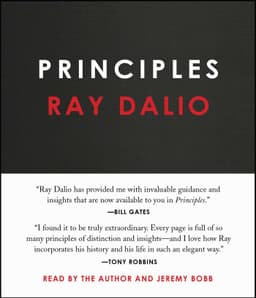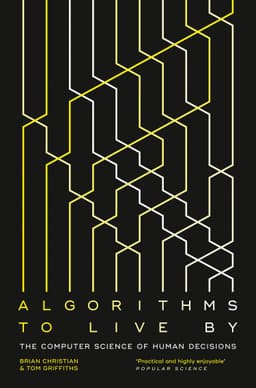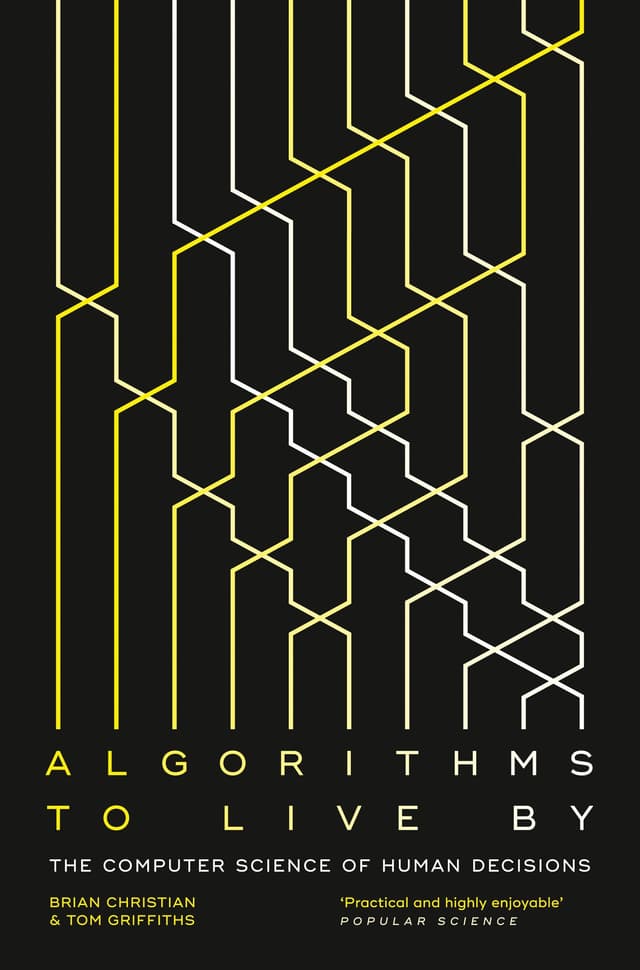
Principles Book Summary
Life and Work
Book by Ray Dalio
Summary
In Principles, Ray Dalio shares the unconventional principles he developed, refined, and used during his 40-year career to create unique results in both life and business - and which any person or organization can adopt to help achieve their goals.
Sign in to rate
Average Rating: 5
1. Where I'm Coming From
Ray Dalio's Formative Experiences
In Chapters 1-8, Ray Dalio shares his life story and the key experiences that shaped the principles he lives by. As a kid, he started investing and trading at age 12. He founded Bridgewater Associates out of his apartment in 1975. Bridgewater became the largest hedge fund in the world, but the journey was not smooth. Dalio made big mistakes and learned hard lessons, like in 1982 when he nearly went broke after being overly confident in his views. This taught him the importance of being radically open-minded, stress-testing his opinions, and systemizing decision-making. Through his successes, failures and personal challenges, he developed a set of principles for life, work and investing that he credits for his effectiveness.
Section: 1, Chapter: 1
Meditation Gave Ray Dalio Calm Equanimity
When Ray Dalio started practicing Transcendental Meditation in college, little did he realize the profound impact it would have on his life and success. He credits his daily meditation practice for providing him "equanimity" and the ability to think clearly even in the most chaotic situations.
As he puts it: "I'm sure Transcendental Meditation, which I have been practicing regularly for nearly half a century, helped provide me with the equanimity I needed to approach my challenges this way." For Dalio, meditation became a transformative habit that enabled him to embrace reality, reflect deeply, and respond effectively rather than emotionally to anything life threw at him.
Section: 1, Chapter: 1
The Two Biggest Mistakes Ray Dalio Made
Ray Dalio openly shares two colossal mistakes he made that ended up shaping his principles:
- In 1971, he was certain the US would default on its debt as Nixon abandoned the gold standard. He bet big on his views, and lost.
- In 1982, he publicized his view that a depression was coming, but was dead wrong. This nearly wiped him out financially and reputationally.
Both times, he was overly confident in his views and hadn't stress-tested his thinking. In analyzing his mistakes, he realized: "To be successful, the 'designer/manager you' has to be objective about what the 'worker you' is really like, not believing in him more than he deserves, or putting him in jobs he shouldn't be in." These mistakes ingrained in him the importance of radical open-mindedness and systemizing decision-making.
Section: 1, Chapter: 3
A 5-Step Process For Getting What You Want Out Of Life
Through his own life experiences, Ray Dalio identified a 5-Step Process anyone can use to achieve their goals:
- Have clear goals
- Identify and don't tolerate problems
- Diagnose problems to get at their root causes
- Design plans that will get you around the problems
- Push through to results
The key is to approach this as a loop, where the results you achieve feedback into setting clearer goals the next time around. Since no one can do all these steps well alone, you must rely on others to help you - this means being radically open-minded both in understanding your own weaknesses and in engaging others to cover for them.
Section: 1, Chapter: 5
Ray Dalio on Steve Jobs
In studying the lives of successful people, Ray Dalio was struck by how Apple founder Steve Jobs embodied the qualities of a "shaper" - someone who can go from envisioning remarkable things to actually building them, often in the face of intense skepticism.
Reflecting on Jobs, Dalio notes: "Steve Jobs was probably the greatest and most iconic shaper of our time, as measured by the size and success of his shaping. Jobs built the world's largest and most successful company by revolutionizing computing, music, communications, animation, and photography with beautifully designed products."
But being a shaper is not all glamorous - it involves the taste for constant battle against skeptics and the ability to withstand failure. Dalio points out how a shaper like Jobs could never have achieved what he did without also developing.
Section: 1, Chapter: 6
Pain + Reflection = Progress
One of Ray Dalio's core mantras is "Pain + Reflection = Progress." Every painful experience, if reflected on objectively, can provide a learning opportunity.
As he explains: "If you can develop a reflexive reaction to psychic pain that causes you to reflect on it rather than avoid it, it will lead to your rapid learning/evolving."
The key is to not waste your pain - radically open-mindedly reflect on it and the circumstances that led to it. What did it teach you about what works and doesn't work? How can you change your behavior as a result? As Dalio puts it: "Go to the pain rather than avoid it." Embrace it, learn from it, and evolve.
Section: 1, Chapter: 7
Visualize Your Life As A Machine Outputting Outcomes
A powerful mental model Ray Dalio suggests is to visualize your life as a machine producing outcomes. Your machine takes inputs (your goals and desires), and outputs results. If the output doesn't match the desired input, you need to examine your machine to see what isn't working and how to fix it.
This means being radically open-minded both about the design of your machine (your habits and strategies) and about your performance in operating it (your day-to-day behaviors). Constantly compare your outcomes to your goals, and use the gaps to stimulate reflection and redesign. As Dalio advises:
"Think of yourself as a machine operating within a machine and know that you have the ability to alter your machines to produce better outcomes."
Section: 1, Chapter: 8
2. Life Principles
Embrace Reality And Deal With It
In the first chapter of Life Principles, Ray Dalio emphasizes the importance of embracing reality rather than wishing it was different. As he puts it:
"There is nothing more important than understanding how reality works and how to deal with it."
He advises approaching life as a game where your goal is to face challenges and figure out how to get around them. Don't let your emotions cloud your thinking - try to perceive reality as objectively as possible and then figure out how to operate within it to get what you want. Be radically transparent with yourself and others about what reality is, even if it's not pretty or pleasant. Only by honestly confronting the facts can you hope to shape them.
Section: 2, Chapter: 1
5 Things To Remember When Facing Reality
When facing reality, keep these 5 things in mind:
- Don't confuse what you wish were true with what is really true.
- Don't worry about looking good - worry about achieving your goals.
- Don't overweight first-order consequences relative to second and third-order ones.
- Don't let pain stand in the way of getting what you want.
- Don't blame bad outcomes on anyone but yourself.
Constantly remind yourself of these so that you can take an objective, clear-headed approach to getting the results you want. You can't change reality by ignoring or complaining about it - you can only change it by honestly acknowledging it and then finding ways to shape it going forward.
Section: 2, Chapter: 1
Radical Open-Mindedness Is The Key To Rapid Learning
Perhaps the most important principle in Ray Dalio's worldview is: Be radically open-minded. He attributes his own success to constantly stress-testing his opinions, considering alternative viewpoints, and being willing to abandon his ideas when proven wrong.
"Radical open-mindedness and radical transparency are invaluable for rapid learning and effective change."
But being radically open-minded is easier said than done. It requires being deeply humble about how challenging reality is to understand and how prone we all are to bias. It means training yourself to actively consider viewpoints that make you uncomfortable and to seek out people who disagree with you. And it demands being transparent so you can gain insight into your own blind spots and weaknesses.
Cultivating this mindset is a lifelong challenge - but an immensely fruitful one.
Section: 2, Chapter: 3
How To Figure Out What Someone Is Like
A key insight Dalio shares in Life Principles is that people are wired differently - and understanding someone's wiring is essential for figuring out how to interact with them. Luckily, there are ways to systematically understand what someone is like. Dalio lays out frameworks like:
- Introversion vs Extroversion
- Intuiting vs Sensing
- Thinking vs Feeling
- Planning vs Perceiving
Along with other tools like personality assessments, these frameworks provide a starting point for grasping someone else's wiring. Armed with this knowledge, you can thoughtfully compose teams, assign responsibilities, and communicate in a way that brings out the best in people.
Section: 2, Chapter: 4
Principles As Fundamental Truths
"Principles are fundamental truths that serve as the foundations for behavior that gets you what you want out of life. They can be applied again and again in similar situations to help you achieve your goals."
Section: 2, Chapter: 1
Make Your Decisions As Expected Value Calculations
One of the most powerful lessons in Life Principles is Dalio's framework for making decisions. He advises thinking of every decision like an expected value calculation:
"Think of every decision as a bet with a probability and a reward for being right and a probability and a penalty for being wrong."
Whenever you're facing a decision, estimate the probability that you are right and the reward that you'll gain if you are. Then estimate the probability you are wrong and the cost you'll incur if you are. Multiply each probability by its reward or penalty, and add up the results to get an expected value. If the expected value is positive, make the decision. If it's not, don't. This takes emotion out of the process and provides a systematic way to make rational choices.
Section: 2, Chapter: 5
3. Work Principles
An Organization Is A Machine With Two Major Parts
Dalio explains that an organization is like a machine consisting of two major parts - the culture and the people. A great organization needs both a great culture that solves problems well and loves building new things, as well as great people with excellent character and capabilities. The key is to cultivate meaningful work and relationships through radical truth and transparency.
Section: 3, Chapter: 1
Use Transparency To Build Trust And Achieve Excellence
Some key tips Dalio gives on using radical transparency:
- Share hardest things - increases trust long-term even if uncomfortable short-term
- Make things public so justice prevails; integrity matters more than privacy
- Be extremely open; don't let fears of judgment prevent getting in sync
- Explain reasoning openly; have integrity to be honest with all Used well, radical transparency reduces politics, exposes harmful actions, and keeps an organization aligned and performing with the highest standards.
Section: 3, Chapter: 1
Believability Weight Your Decision Making
In an idea meritocracy, not all opinions are equal. Those with demonstrated expertise and capabilities in an area have "believability" and their views are weighted more heavily. Bridgewater has developed systems to track people's believability on various dimensions in order to facilitate idea-meritocratic decision making. When disagreements occur, believability-weighted voting is often used to resolve them, with the views of more believable parties counting more. Ultimately, this allows the best thinking to prevail.
Section: 3, Chapter: 5
The WHO is More Important Than the WHAT
"No matter what work you do, at a high level you are simply setting goals and building machines to help you achieve them. I built the machine that is Bridgewater by constantly comparing its actual outcomes to my mental map of the outcomes that it should be producing, and finding ways to improve it."
Section: 3, Chapter: 7
Hire The Right People
When hiring, it's critical to be extremely discerning and have a systematic process:
- Think through the values, abilities and skills you need for the role
- Don't just look at resumes - hear how candidates think and visualize if they will succeed
- Check references thoroughly and don't assume someone who succeeded elsewhere will succeed in your company
- Look for people you want to share your life with, not just fill a job
Bridgewater (Dalio's company) looks for people who think independently, embrace truthful reflection and improvement, and value excellence and the community.
Section: 3, Chapter: 8
Constantly Train, Test, Evaluate, and Sort People
Managing people at Bridgewater is a constant process of training, testing, evaluating, and sorting. Training focuses on helping people develop the skills and abilities required for their role. Testing gives them opportunities to succeed or fail in applying their training. Evaluation is a constant process of openly and objectively assessing people's performance, getting in sync on their strengths and weaknesses, and planning next steps for training or reassignment. Sorting means moving people into roles that best fit their abilities, or out of the organization if they're not a good fit. It's all about matching people to the right roles at Bridgewater.
Section: 3, Chapter: 9
Diagnose Problems To The Level Of The Machine
When diagnosing problems, Dalio recommends asking:
- Is the outcome good or bad?
- Who is responsible for the outcome?
- If the outcome is bad, is the responsible party incapable or is the design bad?
Drilling down to the specifics of how the machine (designs, processes) and the people (responsible parties) either failed or succeeded is key to understanding root causes and making improvements. You have to connect problems to specific people or processes.
Section: 3, Chapter: 12
Put Yourself in the Position of Pain
When designing your "machine," put yourself in the "position of pain" for a bit - get into the flow of work and feel the frustrations of operating within the design. Where are the tensions, the "pains"? Experiencing this directly will help you improve the design. A few other design principles:
- Think of the design like a "movie script," with different people and processes interacting through time. Visualize how things should flow.
- Think about both the big picture and the granular details.
- Beware of unintended second- and third-order consequences. New designs often solve one problem but cause others.
Section: 3, Chapter: 13
Use Tools and Protocols to Shape How Work Is Done
Bridgewater heavily leverages tools and protocols to help shape behavior and steer the company toward principles-based decision making. From the "Dot Collector" that facilitates open feedback to the "Pain Button" that encourages learning from mistakes, these tools reinforce desired mindsets and practices. The tools both teach and facilitate the desired behaviors. Over time, they help the right behaviors become more automatic and embedded in the culture. Dalio believes an idea meritocracy can't function on good intentions alone - proper tooling and reinforcement is needed to make it real.
Section: 3, Chapter: 15
Governance Is the Secret Sauce
Good governance, especially at the top of the organization, is critical for an idea meritocracy to function well. Some key principles:
- Make sure no one individual is more powerful than the governance system itself. Power must be distributed, not concentrated.
- Institute strong checks and balances on power, especially at the top. No one should be beyond scrutiny.
- Ensure that decision rights are clear. Everyone should know who has what authority.
- Carefully define the scope and mechanics of voting. Not all decisions should be made by simple majority rule.
Section: 3, Chapter: 16
Related Content


Algorithms To Live By Book Summary
Brian Christian
Algorithms to Live By reveals how computer algorithms can solve many of life's most vexing human problems, from finding a spouse to folding laundry, by providing a blueprint for optimizing everyday decisions through the lens of computer science.
Algorithms to Live By reveals how computer algorithms can solve many of life's most vexing human problems, from finding a spouse to folding laundry, by providing a blueprint for optimizing everyday decisions through the lens of computer science.
Computer Science
Decision Making

